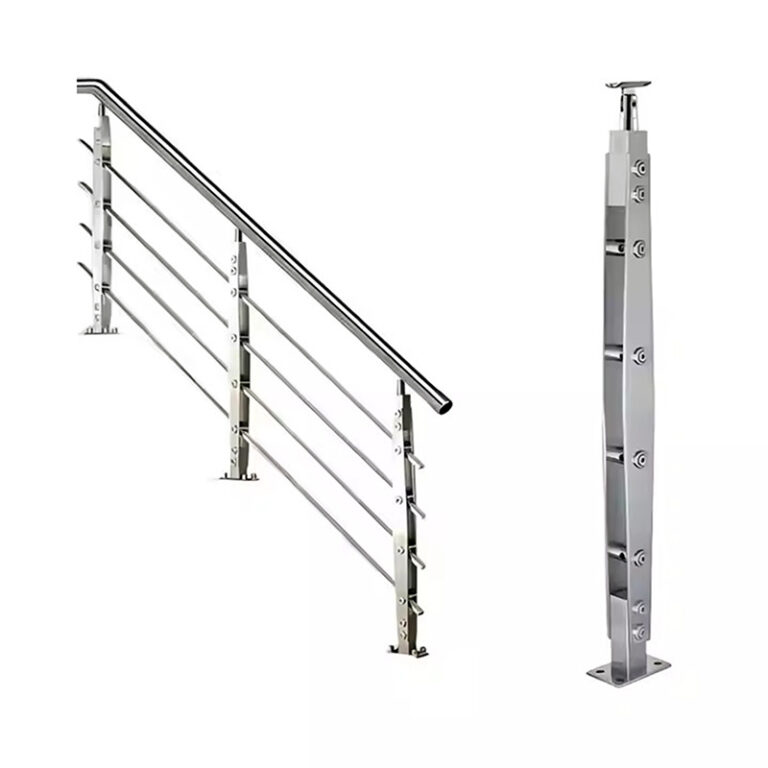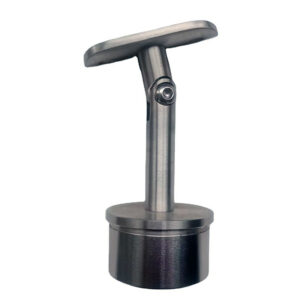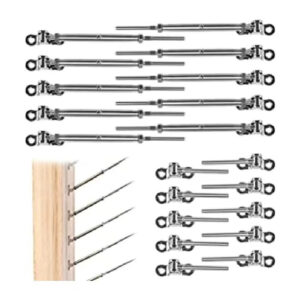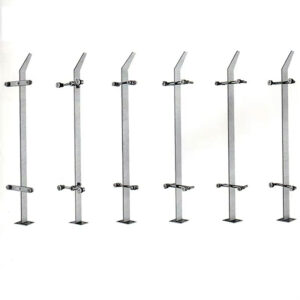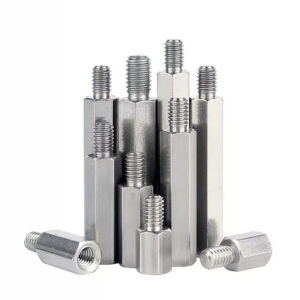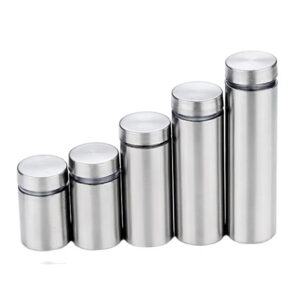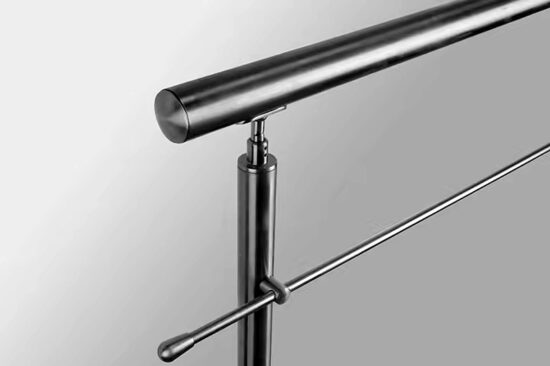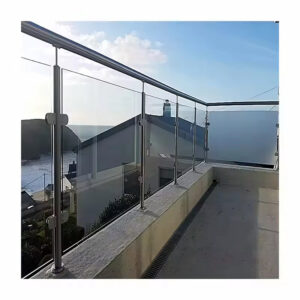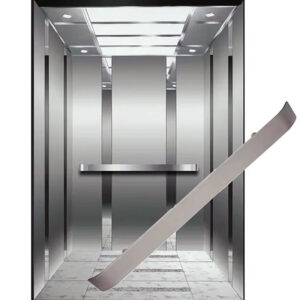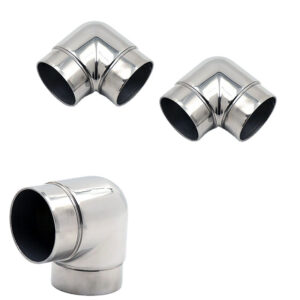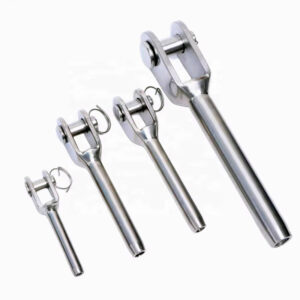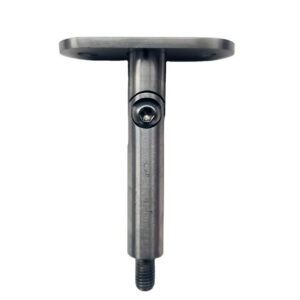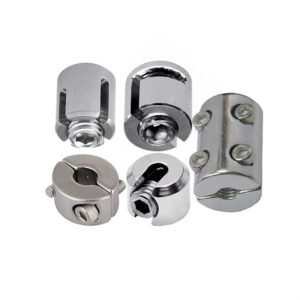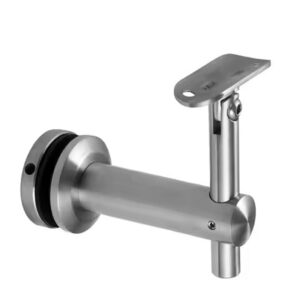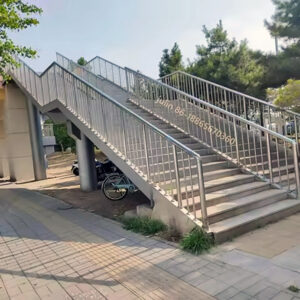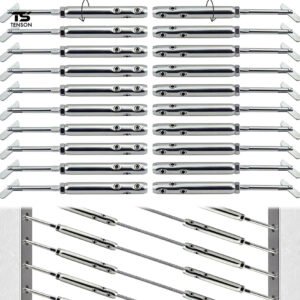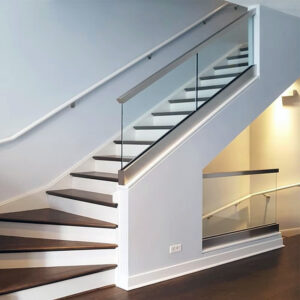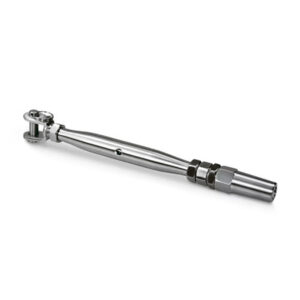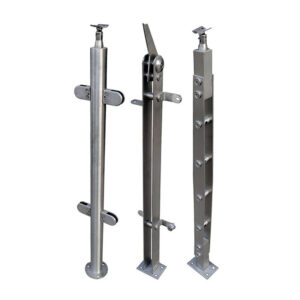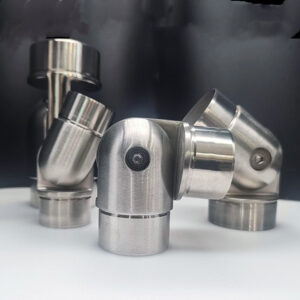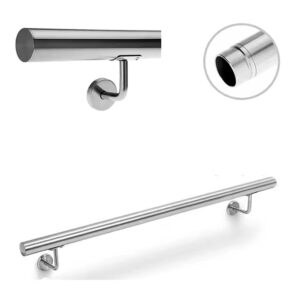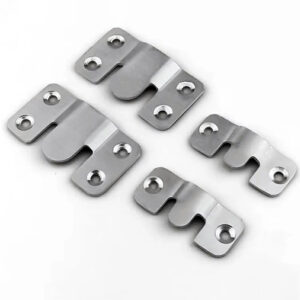Marine environments destroy standard railing systems. Salt spray, constant moisture, and temperature cycles turn typical installations into maintenance nightmares within months. After 23 years manufacturing stainless steel hardware, we’ve learned that marine grade railing systems 316L aren’t just about material selection—they’re about understanding how complete systems perform when everything else fails. The difference between 304 and 316L stainless isn’t academic when your project sits 50 feet from breaking waves.
Understanding Marine Grade 316L Performance
Material Science That Matters
316L stainless steel contains molybdenum, giving it superior corrosion resistance in chloride environments. While 304 grade works for most applications, marine atmospheres demand the enhanced performance of 316L alloys.
| Material Comparison | 304 Stainless | 316L Marine Grade |
|---|---|---|
| Molybdenum Content | 0% | 2-3% |
| Chloride Resistance | Good (inland) | Excellent (marine) |
| Pitting Resistance | Standard | Enhanced |
| Service Life (coastal) | 5-8 years | 15-25 years |
Marine railing fabrication 316L grade requires understanding these metallurgical differences. The molybdenum addition costs more upfront but prevents the pitting corrosion that destroys standard stainless in saltwater environments.
System Integration for Marine Applications
Complete marine grade railing systems 316L include coordinated components engineered for coastal performance:
Structural Posts & Rails: Heavy-wall tubing with welded connections eliminates threaded fasteners that collect salt and corrode. Our posts use 1/8″ minimum wall thickness for wind load resistance.
Glass Panel Systems: Marine-grade glass clamps and structural glazing designed for thermal expansion in temperature-cycling environments. Drainage channels prevent water accumulation.
Cable Railing Hardware: 316L cable with swaged fittings and sealed tensioning systems. Standard vinyl-coated cable fails in marine environments—bare 316L cable maintains tension and appearance.
Mounting Hardware: Through-bolt systems with sealed anchor points. Surface mounting in marine environments requires gaskets and drainage design.
“Marine railing systems require 40% more structural capacity than inland installations due to wind loading and corrosion allowances.” —Marine Construction Standards Institute
▶ Get Marine System Specifications ◀
ODM Marine Railing Manufacturing Capabilities
Our ODM marine railing manufacturing combines standardized components with project-specific engineering. Twenty-three years of marine projects taught us which details matter.
Custom Fabrication Process
Design Engineering: Load calculations for wind and seismic requirements, connection details for substrate conditions, drainage integration for water management.
Material Verification: Mill certifications for 316L chemistry, surface finish specifications for marine durability, weld procedure qualification for structural connections.
Quality Control: Passivation treatment for maximum corrosion resistance, dimensional verification for field assembly, pre-assembly testing for complex connections.
Commercial Marine Systems Applications
Marina and Waterfront Projects
Commercial marine systems require coordination between structural performance and maintenance access. Our modular approach allows section replacement without complete system demolition.
Dock Railings: Post spacing optimized for dock construction, connections designed for seasonal movement, height variations for ADA compliance where required.
Waterfront Walkways: Continuous handrail systems with expansion joints, integrated lighting channels, emergency access considerations.
Restaurant Patios: Wind screens integrated with railing systems, removable panels for storm preparation, aesthetic coordination with architectural elements.
High-Rise Coastal Construction
Buildings within 3 miles of saltwater require marine-grade specifications throughout. Our systems provide consistent performance across multiple exposure zones.
| Exposure Zone | Distance from Water | 316L Requirement | Expected Service Life |
|---|---|---|---|
| Splash Zone | 0-500 feet | Mandatory | 20-25 years |
| Marine Atmosphere | 500-1500 feet | Recommended | 15-20 years |
| Coastal Environment | 1500-5000 feet | Project-specific | 15+ years |
Industrial Marine Facilities
Processing plants, power stations, and infrastructure near water require railing systems that maintain performance through chemical exposure and extreme weather.
“316L stainless maintains structural properties at temperature ranges from -40°F to 180°F without embrittlement.” —Industrial Materials Testing Laboratory
▶ Discuss Your Marine Project Requirements ◀
Installation Considerations for Marine Environments
Field Assembly Challenges
Marine grade coastal railings face installation complexities standard projects don’t encounter. Salt air affects welding procedures, substrate preparation becomes critical, and weather windows limit work schedules.
Welding Requirements: Purge gas protection for root passes, immediate passivation of weld zones, atmospheric shielding in windy conditions.
Substrate Preparation: Concrete surfaces require sealing before hardware installation, steel structures need compatible metallurgy to prevent galvanic corrosion.
Weather Coordination: Installation during low-salt periods, protection of work areas from spray, accelerated curing schedules for sealants and coatings.
Modular System Advantages
Pre-fabricated marine railing components reduce field welding and assembly time. Our modular approach cuts installation time 35-50% compared to stick-built systems.
Standard Connections: Mechanical fasteners with sealed interfaces, pre-drilled components for consistent alignment, gasket systems for weather sealing.
Quality Assurance: Shop fabrication ensures proper passivation treatment, dimensional accuracy for field fit-up, pre-testing of complex assemblies.
Technical Specifications and Code Compliance
Load Requirements
Marine installations require enhanced structural capacity for wind loading and safety factors. Our systems meet or exceed IBC requirements for wind exposure Category D (waterfront).
| Component | Standard Load | Marine Enhancement | Design Factor |
|---|---|---|---|
| Handrail | 50 lbs/ft linear | 75 lbs/ft linear | 1.5x |
| Guard Rail | 200 lbs concentrated | 300 lbs concentrated | 1.5x |
| Infill System | 50 lbs/sq ft | 75 lbs/sq ft | 1.5x |
Surface Finish Performance
Marine environments require specific surface treatments for long-term appearance and corrosion resistance.
Electropolishing: Removes surface contamination and work-hardening, creates uniform passive layer, extends service life 40-60% over standard finishes.
Passivation: Chemical treatment removes embedded iron particles, optimizes chromium oxide layer formation, mandatory for marine service.
“Properly passivated 316L stainless shows no measurable corrosion after 10 years in direct saltwater immersion testing.” —Corrosion Engineering Research Foundation
▶ Connect with Our Marine Engineering Team ◀
Custom Marine Railing Components
Esang Metal specializes in engineered solutions for unique marine applications. Our custom marine railing components address project-specific requirements standard catalogs can’t meet.
Specialized Applications
Yacht Clubs: Removable sections for boat access, integrated cleats and hardware mounting, aesthetic coordination with nautical themes.
Offshore Platforms: Seismic isolation connections, helicopter clearance requirements, emergency egress integration.
Beach Access: Sand infiltration resistance, public safety requirements, storm damage mitigation.
Engineering Support
Twenty-three years of marine projects provides real-world data for performance prediction. Our engineering team understands the difference between laboratory testing and actual service conditions.
Frequently Asked Questions
When is 316L mandatory vs. recommended for coastal projects?
Within 1500 feet of breaking waves, 316L becomes essential for 15+ year performance. Between 1500-5000 feet, project lifespan and maintenance budget determine material selection. Beyond 5000 feet, 304 grade typically provides adequate service with proper maintenance.
How do marine systems handle thermal expansion?
Expansion joints every 120-150 feet for long runs, flexible connections at direction changes, sliding connections at fixed anchor points. Marine temperature cycling requires 25% more expansion allowance than inland projects.
What’s realistic for installation schedules in marine environments?
Weather delays add 20-30% to standard schedules. Salt conditions limit welding windows, substrate preparation takes longer, and protective measures slow daily progress. Plan accordingly.
How do you handle mixed metallurgy in existing structures?
Isolation gaskets prevent galvanic corrosion, compatible fasteners throughout the load path, cathodic protection analysis for complex installations. Existing steel structures require careful interface design.
What maintenance should owners expect?
Annual washing with fresh water, quarterly inspection of connections and sealants, immediate attention to any surface damage. Well-designed 316L systems typically require minimal maintenance beyond cleaning.
How do custom components affect project timelines?
ODM manufacturing adds 6-8 weeks to standard delivery but reduces field fabrication time significantly. Complex projects often finish faster overall with shop fabrication versus field assembly.
▶ Get Answers to Your Specific Marine Application ◀
Performance Comparison and Selection
| System Type | Initial Cost | 15-Year Maintenance | Total Cost of Ownership | Best Application |
|---|---|---|---|---|
| 304 Standard | Lowest | Highest | High | Inland, protected |
| 316 Standard | Medium | Medium | Medium | Light marine exposure |
| 316L Marine Grade | Highest | Lowest | Lowest | Direct marine exposure |
Marine grade railing systems 316L represent the most cost-effective solution for direct saltwater exposure when total lifecycle costs are considered. The premium for marine-grade materials typically recovers within 5-7 years through reduced maintenance and replacement costs.
Our 23 years of marine manufacturing experience shows that proper material selection and system design eliminate most performance problems before they start. Contact our technical team to discuss how marine grade railing systems can solve your coastal construction challenges while delivering long-term value and reliability.
